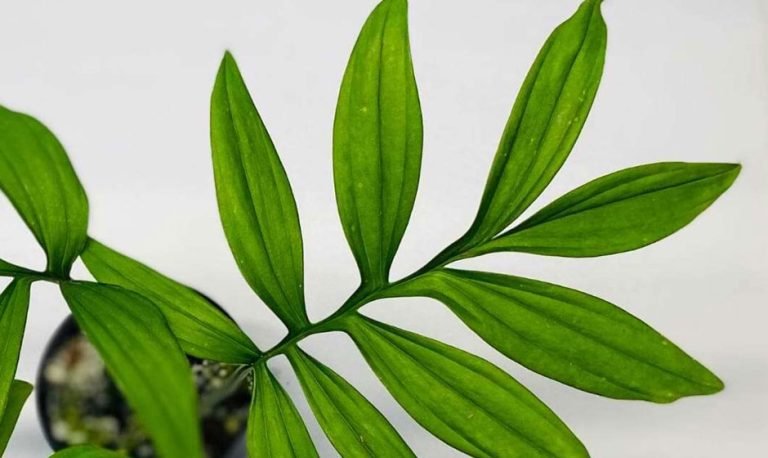Monstera Subpinnata is a unique variety of Monstera plant that stands out from the rest. Unlike the iconic Monstera Deliciosa or the Dainty Monstera Adansonii, which are known for their fenestrated leaves, Monstera Subpinnata has sectioned, frond-like leaves. This climbing plant is native to Ecuador and can reach up to 30 feet tall in the wild. However, indoors, it will usually only grow to around six feet.
Position and Humidity
Monstera Subpinnata thrives in bright, indirect sunlight, much like it would receive in the tropics under the rainforest canopy. Ideally, you should place your Subpinnata plant in an east-facing window to receive plenty of bright sunlight throughout the day, without any direct midday or afternoon sunlight. South- or west-facing windows can also work, as long as you place your plant a few feet away from the window where the sun’s rays won’t fall directly on the leaves.
Since Monstera Subpinnata’s leaves are slender and delicate, it requires plenty of humidity to stay supple. You can set up a humidifier near your plant or mist the plant daily. Alternatively, you can set your plant on a humidity tray or put it in a bright, steamy bathroom, or group it with other plants to create more humidity.
Temperature
Monstera Subpinnata is a tropical plant that prefers warm temperatures. You should keep the indoor temperature between 65 and 80 degrees Fahrenheit and avoid exposing the plant to drafts or blasts of hot air.
Watering
Monstera Subpinnata likes constantly damp but not soggy soil. You should water the plant when the top few inches of soil feel dry to the touch or when a moisture meter reads 3-4. It’s best to use a moisture meter to ensure that you water your plant correctly. Whenever you water your Monstera Subpinnata, ensure that you add water slowly to the top of the soil until it starts draining out of the bottom. Make sure that your potting medium is well-draining, and only water your plant every 7-10 days.
Soil
Plant your Monstera Subpinnata plant in a potting medium that drains well and has a neutral pH. A Cactus mix with a little peat moss and perlite mixed in can work well. Alternatively, you can use hydroponic or semi-hydroponic growing media like LECA. Our favourite potting medium for Monstera Subpinnata is our premium Monstera potting soil.
Fertilizing
Monstera Subpinnata can use up all the nutrients in its potting mix in just a few months. Therefore, you need to keep it well-nourished with a balanced, high-quality liquid fertilizer. We recommend Monstera Plant Food, which is formulated specifically for all varieties of Monstera. Fertilize with every watering during the spring and summer, and half as much in the fall.
Repotting
Monstera Subpinnata is a fast-growing plant, so you need to repot it every year to give the roots room to spread out. This will also refresh the soil, replenish the plant’s nutrient supply, and prevent soil compaction. When repotting, choose a pot that’s 2-3 inches larger in diameter than your plant’s root ball, and make sure it has drainage holes.
Propagation
Monstera Subpinnata plants put out runners, which you can propagate to produce a clone of the parent plant. Cut off the runner with nodes and small leaves and pot it up right away. Alternatively, you can air layer to encourage the runner to produce roots at the node.
Common Questions
Are Monstera Subpinnata Rare? While this Monstera variety isn’t super common in garden centers and big home improvement stores, you can easily find them in online shops and on Etsy.
What’s the Difference Between Monstera Subpinnata and Monstera Pinnatipartita? The leaves of Monstera Pinnatipartita do not separate into separate leaflets, unlike Subpinnata leaves, and remain connected at the tips. Therefore, the leaves are more fenestrated like other Monstera varieties rather than pinnated like Subpinnata leaves.
Final Thoughts
With its unique leaves and simple care requirements, Monstera Subpinnata is an excellent addition to any houseplant collection. Keep this guide handy and provide the ideal light and humidity levels, and your plant will thrive!


